[dropcap]H[/dropcap]uawei’s Mate 20 Pro is the latest in Huawei’s growing – and relatively young – line of premium smartphones. Unlike competitors which are many years older, the Mate series has only been around for five years or so. In that time, Huawei has innovated relentlessly, moving from a fairly average phone as much as a couple of years ago to what could be one of the best phones released in 2018. Yes, Huawei has come along way since the Ascend Mate of 2013, and even since the Mate 9 of 2016.
In 2018, the Mate 20 Pro uses much of what Huawei has learned with the P20 Pro, and takes it further. An already capable camera system has been tweaked and improved, and paired with a class-leading chipset and other quality internals. Is this the first genuinely capable flagship contender from the Chinese giant?
In a word: Yes. It’s the best feeling, best made, most powerful and capable smartphone Huawei has made, and it’s easily among equals in the Pixel 3 XL, Note 9 and more.
Huawei Mate 20 Pro – Specifications
| Display |
|
| Software | Android 9 Pie (with EMUI 9.0) |
| CPU | Octa-core Huawei Kirin 980 |
| RAM | 6GB (Australian model) |
| Storage | 128GB (NM card expandable up to 256GB) (Australian model) |
| Rear Cameras |
|
| Front Cameras | 24MP (f/2.0) + 3D Depth Sensing Camera |
| Battery | 4,200 mAh |
| Connectivity | 802.11 a/b/g/n/ac (wave2), 2.4 GHz and 5 GHz, Bluetooth 5.0, BLE, SBC, AAC, aptX, aptX HD, LDAC and HWA Audio |
| Headphone jack? | No |
| Other | 3D laser depth sensors for face unlock, in-display fingerprint sensor, wireless charging, reverse wireless charging, USB Type-C, IP68 rating |
| Dimensions & weight | 72.3 x 157.8 x 8.6 mm — 189g |
| Price | $1,599 |
👍 What do we like?
- Huawei’s industrial design is among the best in the market; squeezing three cameras (plus a front-mounted one), 3D facial recognition, a huge battery and stereo speakers into something the size of the Mate 20 Pro is an outstanding job.
- The triple-camera system on the Mate 20 Pro is – without doubt – among the best camera systems available. It takes some of the best photographs you’ll see from a smartphone.
- Huawei’s Kirin 980 processor is insanely powerful, quite likely ahead of Qualcomm’s Snapdragon 845 class-leading SoC. Paired with 6GB of RAM and 128GB of storage, you’ll not be left wanting, and it benchmarks ahead of every other Android phone available.
- The battery life is pretty well unrivaled; two days’ real world usage is easily achievable, and just wait until you try Huawei’s 40W charging solution – you can watch the battery percentage trickle upward (quite quickly) before your eyes.
👎 What don’t we like?
- Huawei’s decision to opt for an in-screen fingerprint reader that isn’t ready. After a few days, I gave up and wished for a proper hardware sensor.
- Facial unlock is pretty good, almost very good, but it’s no substitute for a fast-reacting physical fingerprint sensor which the Mate 20 Pro sorely misses.
- Huawei’s design incorporating a huge notch on the front is borderline unforgiveable. While notches on other phones leave Android’s status / notification bar readily usable, Huawei’s Mate 20 Pro reduces the status bar to a place where you can see a WiFi icon and your battery level. Forget ever seeing a notification icon (much less any more than one). Given you can’t hide icons you don’t care about (e.g. Bluetooth, WiFi, cell signal strength, or NFC), you simply can’t see your notifications at a glance anymore.
- EMUI 9 has come a long way, and while it’s far from the visual indecency it once was, it still causes a few problems. Stock Android has nailed gesture navigation, but Huawei’s EMUI does it differently. Stock Android handles task switching really well. Huawei’s EMUI doesn’t do so well. On our review unit, the camera app also fails occasionally, and for a phone so clearly focused around its camera strengths, this is inexcusable.
Design
Physically, with the exception of an oversized notch, the design of the Mate 20 Pro is really quite something. Size-wise, it compares with the P20 Pro being roughly the same size, and on par with Samsung’s Galaxy S9+, Pixel 2 and 3 XL, and other phones of a similar size. It’s not small, but it doesn’t feel oversized.
Mate 20 Pro’s display is a high quality OLED; there’s no silly discolouration from side angles as LG panels seem to experience, just a quality display that works admirably. The display – all 6.39 inches of it – fits between an aluminium frame and glass back, giving the phone a solid, robust and yet not too weighty feel. There’s a very slight camera bump, and the whole package is IP68 rated. Colour-wise, a range were announced overseas, but in Australia it’s simply Black or Midnight Blue (the latter of which our review unit was). Unlike the P20 Pro, the Twilight variant of the Mate 20 Pro won’t be coming here.
Amongst all this discussion of great design, it pays to note a few key design decisions. For starters, there’s no 3.5mm headphone jack, requiring users to use an included 3.5mm to USB-C adaptor to use wired headphones. This doesn’t bother me, but it will others. What does bother me, though, is the giant and annoying notch. Good design this isn’t, and while we can understand why Huawei has gone in this direction – to house an array of useful sensors – it looks terrible, and really spoils the Mate 20 Pro’s usability (more on this later). What’s most curious is that Leica – Huawei’s imaging partner – agrees that the notch is not an example of good design, but they accept it because of the benefits it brings.
The remainder of the physical design is unremarkable; there’s a volume rocker, power button, and you get a charger, cable and earbuds in the retail box, alongside a handy clear plastic case to protect your new phone. I wish more manufacturers offered this!
Camera
There are those that thought Huawei’s partnership with Leica was little more than a branding exercise, but over the years, Huawei has continued to further disprove that assumption. With the P20 Pro earlier this year, Huawei pretty much nailed mobile photography, displacing literally every other smartphone. In some respects, then, Huawei’s Mate 20 Pro represents less of a revolution and more of an evolution of an already-great setup.
Camera Specifications
The camera setup in the Mate 20 Pro is not that different to the P20 Pro; in fact, the lens and sensor configuration is almost identical:
| Huawei Mate 20 Pro | Huawei P20 Pro | |
|---|---|---|
| Main Sensor | 40 MP, f/1.8, 27mm (wide), 1/1.7″, PDAF/Laser AF | 40 MP, f/1.8, 27mm (wide), 1/1.7″, OIS, PDAF/Laser AF |
| Ultrawide Sensor | 20 MP, f/2.2, 16mm (ultrawide), 1/2.7″, PDAF/Laser AF | 20 MP B/W, f/1.6, 27mm (wide), 1/2.7″, OIS, PDAF/Laser AF |
| Telephoto Sensor | 8 MP, f/2.4, 80mm (telephoto), 1/4″, 5x hybrid optical zoom, OIS, PDAF/Laser AF | 8 MP, f/2.4, 80mm (telephoto), 1/4″, 3x optical zoom, OIS, PDAF/Laser AF |
| Front Camera | 24 MP, f/2.0, 26mm (wide) | 24 MP, f/2.0, 26mm (wide) |
The main differences are in the ultra-wide sensor, which is now a colour sensor instead of monochrome, has a slightly slower aperture (f/2.2 vs f/1.6) but a much wider lens (16mm vs 27mm). The main camera is the same, as is the telephoto sensor.
The rationale for the P20 Pro’s monochrome sensor was to capture depth and detail information which – at the time – was superior to what could be captured with a colour sensor. However, in less than twelve months, Huawei and Leica claim that technology has progressed such that this sensor is no longer needed, and can be replaced with a quality colour sensor that can, ultimately, do much more.
Camera samples – day to day
In our opinion, the results speak for themselves. The P20 Pro captured beautiful photos, and the Mate 20 Pro does too, with a few improvements. Huawei’s Night Mode has been refined, the AI-driven camera modes have significantly grown in number, and the overall ease of use – the simplicity of taking photos – has improved. There are still quirks – e.g. no HDR in auto mode, you have to enable it manually – but at the same time, the standard camera is so good that HDR rarely feels necessary.
All of the photos above were taken with Huawei’s default camera settings. No tap to focus, no lighting adjustment, just open the camera, point, shoot. The only change made between any of them was to select a zoom level, which AI can’t (and shouldn’t) do. It automatically detects the right exposure, tone, white balance, focus and more. Mate 20 Pro makes even the most amateur photographer look somewhat talented, and that’s no small task.
Camera samples – super zoom
The 5X hybrid optical zoom is something, too. I’ve never been especially fond of using zoom on a camera, preferring to move myself to a better position instead. However, you can’t always get up close with your subject, and then you need zoom. The Mate 20 Pro’s 5X zoom, and the ease at which it switches between zoom presets makes taking great photos easy, and getting close up even easier still.
Until now, zoom on a smartphone almost always meant some combination of digital zoom and, if you were lucky, mediocre optical zoom. As these photos show, 5.0 X hybrid optical zoom does a brilliant job of picking out details that you probably won’t see with the naked eye. I also found myself using the 0.6 X ultra-wide angle setting an awful lot, because it takes amazing photos.
Camera samples – light the night
The real praise, though, is reserved for the Mate 20 Pro’s capabilities at night. A lot has been said lately of Google’s Night Shot mode which it is developing for the Pixel 3 range. Having seen those results, they are nothing short of stunning, but not without their flaws. Some scenes end up looking like they’re computer generated and if we’re being accurate, they are. Google’s AI does some incredible things with dimly lit photos, but in many cases, the end up looking fake. Huawei’s Mate 20 Pro might not go quite so far with its night mode photos, but if you ask me, they end up looking at least more real.
Mate 20 Pro’s camera isn’t perfect, but no camera is. Sometimes it needs assistant with focus. Sometimes an adjustment in exposure or white balance is required to make photos really pop. That’s just photography, though – ultimately, a camera should make it easy to capture what you want, but it isn’t up to the camera to know what that is. AI goes a long way to doing precisely that, but sometimes you’ll have different ideas, and that’s okay too.
What I’ll say is this. Using the P20 Pro and moving from that to the Mate 20 Pro makes using a point-and-shoot camera feel positively prehistoric. I have Sony’s RX 100 M5 which is one of the best non-DSLR cameras money can buy. I know this, because I went and bought it after extensive research. It is, and remains, the best camera I’ve ever used.
However, next to what the Huawei Mate 20 Pro can do, it’s a dinosaur.
Software
Huawei’s Mate 20 Pro is not without some software shortcomings, and the main one stems from the way Huawei’s EMUI software handles the giant notch (or rather, doesn’t handle it). The width of the notch makes Android’s status bar unusable, with valuable space taken up by icons you don’t need and can’t remove, and the front-facing sensor array.
Unlike some of its earlier phones that let you hide icons, Huawei’s Mate 20 Pro does not, meaning the useless NFC and Bluetooth icon are always displayed when on, an absolutely baffling decision. As someone who receives a lot of push notifications, not being able to see any of these icons at a glance is incredibly frustrating, and it takes a lot longer to catch up with them.
While Huawei offers a software switch to “hide” the notch, all it does is add black colour either side of the notch. It doesn’t move the notification bar down so that it renders below the notch line – which would have been fantastic – it just blacks out the corners so you can’t see the notch so much. Notification icons still render in this space, though, meaning that you generally don’t see any of them.
The EMUI 9 experience
The remainder of the software experience isn’t too bad at all. I find Huawei’s settings very easy to navigate (and the search function very powerful), and while I am not enamored with Huawei’s default launcher, it’s readily replaced. Huawei’s EMUI offers gesture navigation, the traditional 3-icon navigation, or a Dock mode, but really, only the 3-icon navigation is any good. EMUI’s gesture navigation is quite different to the Android standard gesture navigation, increasing the learning barrier for anyone coming to this phone from another. You can get used to it – I certainly did – but it never feels as intuitive (nor works as well) as it should.
Yes, we’ve mentioned the shortcomings first, and you might note there’s really only a couple of them. This is for a good reason; overall, EMUI 9 on Huawei’s Mate 20 Pro is a reasonably enjoyable experience. For the purists, no, it isn’t stock Android. However, most users will probably find the experience on EMUI 9 to be fairly well acceptable.
There are things that Huawei does that other manufacturers do not; for example, your lock screen does not fill up with old notifications. Only ones you’ve not seen are shown – even though you can’t see them in the notification bar because of the notch, you can keep an eye on what’s going on, usefully, using the lock screen. It’s a nice touch.
You don’t get Google’s Digital Wellbeing announced as part of Android 9 Pie, but you do get Huawei’s version (called Digital Balance) which works along the same principles, and it works well.
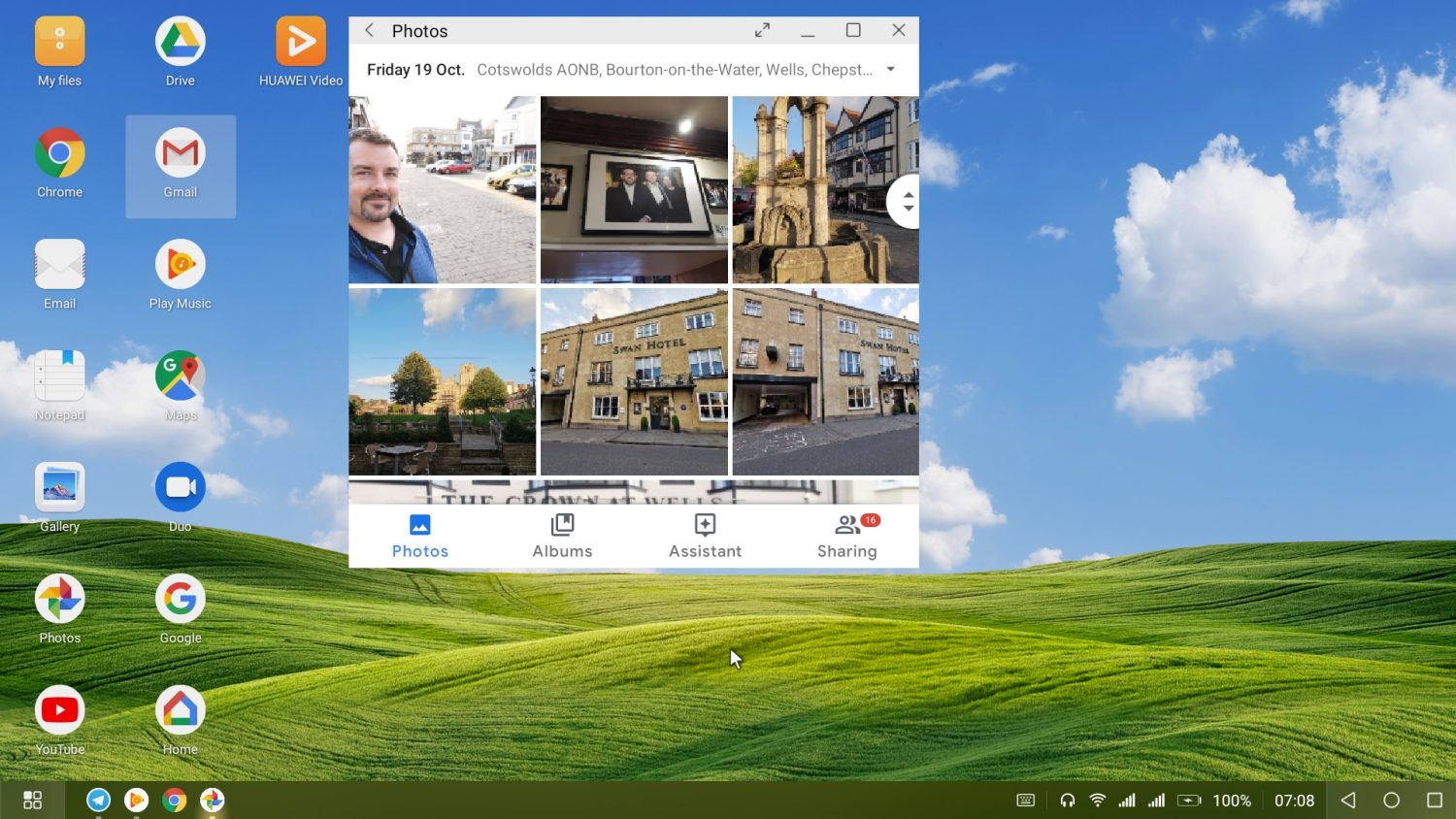
Huawei’s desktop mode and branded apps
Huawei includes a desktop mode which you can access when the Mate 20 Pro is plugged into an external display/keyboard/mouse via the USB-C port. My laptop uses a USB-C docking station, so I plugged in the Mate 20 Pro. A few seconds later, a desktop mode appeared on my screen and I could interact with my keyboard and mouse. It was seamless, and remarkably easy to use. The best bit? It doesn’t require any proprietary accessories (e.g. Samsung’s DeX Pad) – it works with whatever you’ve got. If you’re on the go and looking for an easy way to enter more data than an on-screen keyboard readily allows, this will be a welcome feature.
Huawei does include an array of pre-installed apps, but fortunately they’re mostly Huawei apps rather than some 3rd party developer that’s paid to have their stuff on Huawei phones. Huawei’s apps – e.g. calendar, customer care, smart remote, etc – are mostly pretty well done, and are reasonable replacements for the stock Android apps that some of them replace.
That said, I found myself quickly returning to Google Calendar over Huawei’s Calendar, just because I’m more familiar with how it works. Another quirk was Huawei’s Calendar seemed to screw up my Google Calendar colours (which annoyed my OCD greatly) so very quickly I stopped using it.
Phone Clone is a feature I tried once – to migrate my data from the P20 Pro I had been using, to the Mate 20 Pro – and while it appeared to have worked very well, the reality was a little different. It seemed in the process of copying everything from one phone to another that it had somehow stuffed up the Google accounts, meaning that some features simply refused to work (e.g. my email wouldn’t sync, Calendar refused to sync reliably, etc). Removing the Google account and re-adding it didn’t work either – I had to factory reset the Mate 20 Pro, and set it up from scratch (which resolved the issues).
Others have reported Phone Clone worked perfectly without issues, but I certainly didn’t find it to be seamless. Chances are good it’ll work for you.
Some of the things that Huawei replaces from stock Android should probably have been left alone, though. The overview screen (aka multitasking / switcher view) is a blatant copy of Apple’s task switcher, and the Android stock version works much better. It’s not that there’s anything wrong with Huawei’s implementation – it just isn’t to my taste.
Biometrics
This isn’t something I’d usually make mention of in a review, because by and large, these features both work and are unremarkable. In the case of the Huawei Mate 20 Pro, though, these features need to be talked about – firstly, the two types of technology used are very cool, and for the most part, they work well.
Huawei has incorporated a 3D Face Sensor into the front of the Mate 20 Pro which offers a secure means to unlock your phone in addition to a PIN, fingerprint or other means. My experience with the face unlock has been pretty near flawless; there’s very few times that it doesn’t work, and quite often it’s able to take account of sunglasses, hats or whatever and genuinely detect whether you’re you, or not.
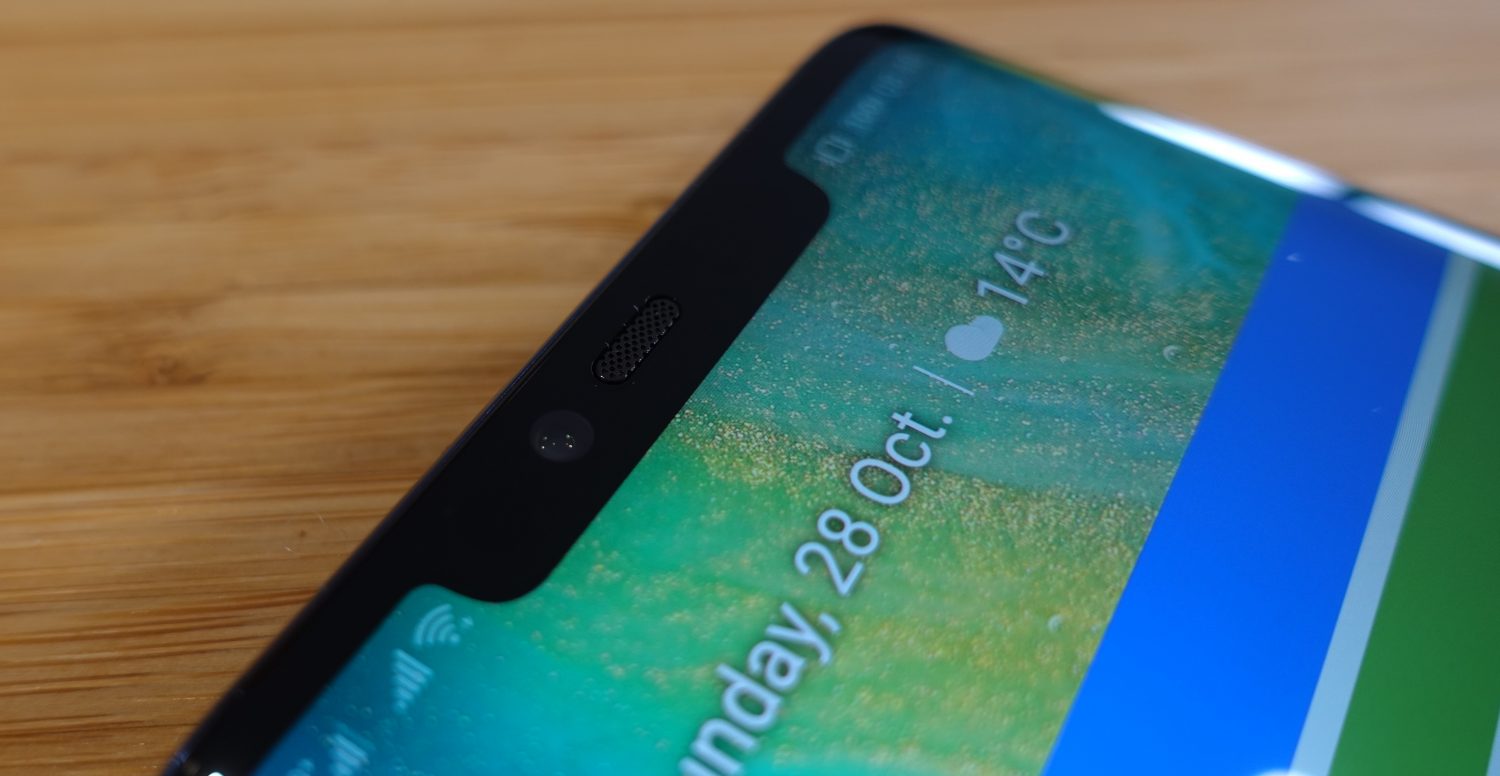
The in-screen fingerprint sensor is incredible, but it’s not flawless. While it’s the first in-screen fingerprint sensor that we’ve seen in a widely available consumer device, the technology is far from mature. Combined with Huawei’s odd decision to locate the sensor a third of the way up the display, the occasional mis-read (or refusal to recognise a valid fingerprint) can be a little frustrating.
However, when you get used to the sensor location and position your finger correctly, the sensor works quickly and accurately more often than not. Better yet, users can use this in-screen fingerprint sensor everywhere that Android supports, to authorise purchases in Google Play, to sign into banking apps, and more. Huawei throws in a few extra features such as locking apps, a secret file system, and more.
The other downside of having all these biometric sensors – particularly the 3D Face Unlock – is that Huawei has had to put them somewhere, and that somewhere is the ultra-wide notch at the top of the display. It takes up a good half the width of the display, and as I’ve noted elsewhere, it covers up much of the useful area where you’d otherwise want notification icons to go. Huawei’s option to hide the notch is welcome, but frankly it offers little consolation for the space that it takes up.
I’ve learned to work around it, and change the way I use my phone slightly to get around the lost functionality, but really, this doesn’t feel like the best way to have gone forward. I find myself wishing that Huawei had done a much better job here.
Performance
Overall, despite these quirks, the Huawei Mate 20 Pro is an excellent phone. It’s powered by the most capable, powerful chipset on the market, including a dual neural processing core dedicated to on-device AI functions. Paired with 6GB of RAM and 128GB of storage, the Mate 20 Pro runs rings around the competition. From day to day use, through to screaming through benchmarks, there’s nothing I’ve found yet which tripped the Mate 20 Pro up, and that’s big praise for Huawei’s work in optimising the crap out of their hardware and software.
This dovetails nicely into the battery performance, which is an order of magnitude better than anything I’ve seen in recent times.
Mate 20 Pro’s battery life
With a 4,200 mAh battery – how they squeezed that in I’ll never quite know – the battery life can be truly measured in days rather than hours. Granted, the first couple of days I smashed the battery while going nuts playing with all the new features.
However, once I settled into regular daily use of the phone, I was quite often reaching the end of the day and putting the phone on charge at 10pm with well over 50% still available. I can’t remember a phone that I’ve been able to do this with, and though Huawei’s P20 Pro came close, the Mate 20 Pro does it much better.
I can spend a day at work, on the go, or even driving around the UK without paying any thought to my battery life; in short, battery stress is a thing of the past even for the most demanding user. With a 40W charger included in the box, too, you can truly forget about going flat – just a few minutes on the charger is enough to add hours of use to your phone, and it charges so quickly that you can watch the percentage tick up right before your eyes. It’s not something I use often (I just use a 15W charger on my nightstand overnight), but if you’re in a pinch, that 40W charger is magic.
The only annoying thing is that it’s not a standard charging protocol, so even if I connect the Mate 20 Pro to my laptop charger (which delivers 65W over USB-C), it doesn’t “supercharge”. It charges quickly, of course, but not as quick as it would with Huawei’s own charger. Something to bear in mind rather than a gripe.
Some other observations
- 4G performance on dual-SIMs was excellent. There are very few places where the Mate 20 Pro lost signal, and it performed well in areas where other phones did not.
- While the memory can be expanded using NM cards, you can’t use MicroSD – this means buying newer, more expensive cards than what you might already have.
- Bluetooth connectivity for audio and in-car use was excellent! However, it played less well with Samsung’s Galaxy Watch – it disconnected once or twice a day, and occasionally it didn’t automatically reconnect.
- Unlike some phones early in the release cycle, the Mate 20 Pro had few issues with crashing. The camera app on pre-production software was a bit buggy, but once we received retail software, that particular experience disappeared completely.
Conclusion
On one hand, the design is simply stunning. It’s every bit the same quality, class and style that Apple and Samsung put together, both in physical design and in software design (mostly). The camera system is, without doubt, class-leading and quite probably the best you’ll find on a smartphone in 2018, besting Samsung, Apple and even Google’s AI-powered Pixel 3 camera.
On the other hand, though, Huawei seems to have tried to do too much, instead of getting a smaller list of things 100% correct. Its biometric authentication is excellent, and yet not flawless. I understand why Huawei is excited about the fingerprint sensor – it’s the first in-screen sensor on the market – but at the same time, it just feels like it could work better.
Should you buy it?
What you’re left with, after all this, is a $1,599 phone that is arguably the best phone you can buy today if money is no object. The issues we’ve identified really are only minor in the scheme of things, and are well offset by the momentous gains Huawei has made in user experience, camera performance and the overall agility and speed of the handset.
In another way of speaking, every phone has issues but not every phone overcomes them. It’s not enough to offer an okay experience if your phone has flaws; the experience needs to be amazing so that people simply overlook or forget the flaws, and Huawei’s Mate 20 Pro is tantalisingly close to this point.
So much so that, if I were to choose to spend my money on a new phone right now, I’d buy the Mate 20 Pro over the Pixel 3 from Google, and that’s praise well earned. However, if I had the choice of phones and I was looking for the compromise of best value vs best features, I’d pick up Huawei’s P20 Pro, which is undoubtedly about to get a price drop, and at only six months old, it’s been my favourite phone this year.
Disclosure Statement
Huawei has allowed Ausdroid to retain the Mate 20 Pro for a long term review period.


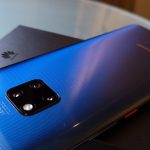




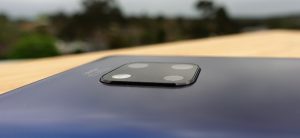
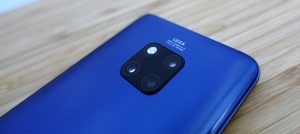
























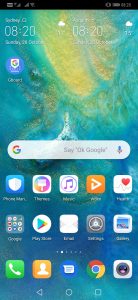


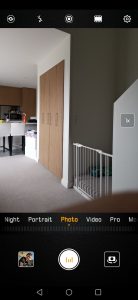

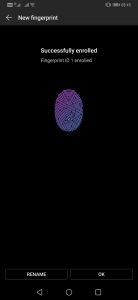

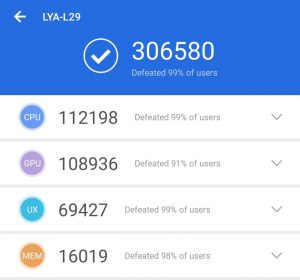
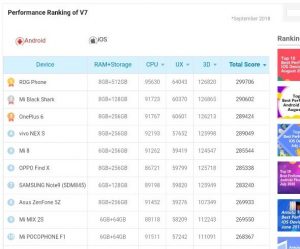



Excellent review, thanks. I’ve had my Mate 20 Pro for a few days now and have been very impressed so far. I was a little concerned about EMUI being too heavy-handed after coming from the OnePlus Oxygen OS, but honestly I’ve had few issues with EMUI. The whole OS just flies. As pointed out in the review, the lack of notification icons is frustrating due to the exorbitant amount of real estate occupied by the notch. I’ve found the gestures to be intuitive, though switching between apps is bit clumsy. Battery life is just epic. Haven’t had a real chance… Read more »
Good review thank you.
I concur with the final paragraph, the P20 Pro is the first phone in a long list of phones that I have owned that actually leaves me feeling like I have reached “peak phone”, that is to say, I can’t find anything better at this point in the value / features stakes – Pixel 3 XL, iphone, Note 9 are all 30-50% more expensive but are they “better” by that margin better?
My Mate 20 Pro is waiting for me when I return from holiday – launched the day after I departed, such a shame! Haha 🙂 I appreciate the honest review, I had read about many of these niggles with the device and after tossing up between this and the 3 XL I decided to go with the Huawei despite the niggles, mostly based on battery life and the versatility of that camera. Your review has helped me feel I’ve made the right decision despite those quirks though, I can’t wait to get back and start using it! I wasn’t aware… Read more »
Great review as always, Chris. I’m using the P20 Pro at the moment and I must say that it’s an absolute beast of a phone – especially when it comes to two important features; battery and camera. Good to hear that Huawei have continued to improve on this.